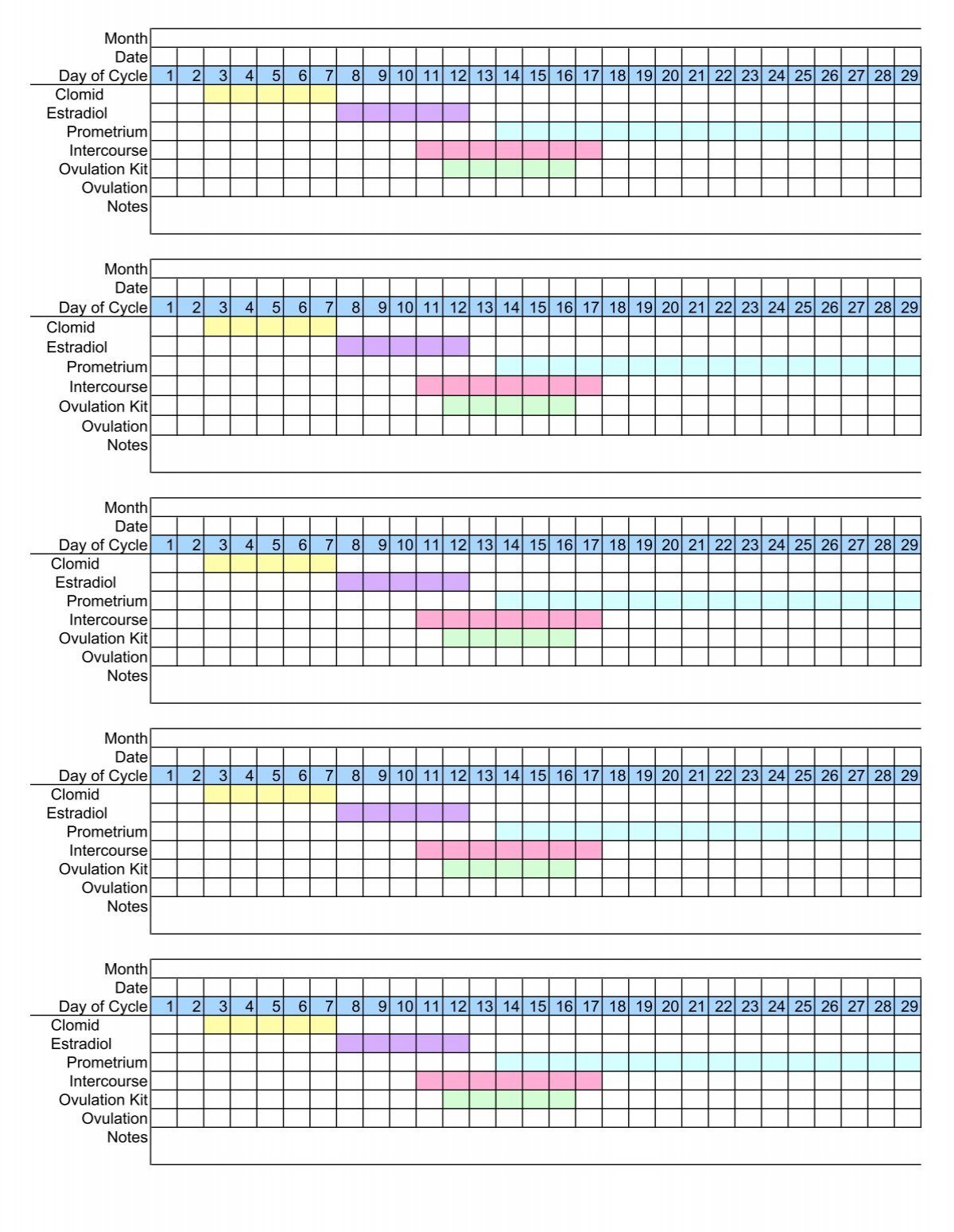If you’re looking to optimize your fertility journey with Clomid, an ovulation calendar can enhance your chances of conception. This tool allows you to track your menstrual cycle accurately, highlighting your most fertile days. Start by marking the first day of your period, and note the average length of your cycle. For those using Clomid, ovulation typically occurs five to ten days after completing your course. Knowing this can guide your timing for intimacy, significantly increasing the likelihood of pregnancy.
Using an online ovulation calendar is straightforward and user-friendly. Many platforms offer customizable features that let you input specific details about your cycle. Some even send reminders to help you stay on track. This proactive approach provides clarity and structure, ensuring you don’t miss your peak fertility window.
Always consult your healthcare provider before starting Clomid. They can provide personalized advice based on your health and history. Once you have a plan in place, combine it with regular tracking through your calendar to maximize the potential of your Clomid treatment. By aligning your efforts with accurate cycle data, you’re setting the stage for hopeful results.
- Clomid Online Ovulation Calendar: A Detailed Guide
- Understanding Your Fertile Window
- Integrating Clomid with Your Calendar
- Understanding Clomid: How It Works for Ovulation
- How Clomid is Used
- Expected Outcomes
- Steps to Create Your Online Ovulation Calendar with Clomid
- Tips for Tracking Symptoms and Fertility with Clomid
- Chart Your Basal Body Temperature
- Monitor Cervical Mucus Changes
Clomid Online Ovulation Calendar: A Detailed Guide
Utilize a Clomid online ovulation calendar to enhance your chances of conception. Track your cycle meticulously, marking the first day of your last menstrual period. This date is crucial, as it establishes the baseline for your fertile window. Generally, ovulation occurs approximately 14 days before your next period begins.
Understanding Your Fertile Window
Your fertile window is typically five days leading up to ovulation, plus the day of ovulation itself. By accurately predicting ovulation with Clomid, which stimulates egg production, you can optimize your timing. Consider taking ovulation predictor kits (OPKs) alongside the calendar to confirm when you are about to ovulate. These kits detect the surge in Luteinizing hormone (LH) that precedes ovulation.
Integrating Clomid with Your Calendar
Start Clomid as per your healthcare provider’s instructions, usually on the fifth day of your cycle. Follow your calendar to monitor responses and symptoms. Note any changes in cervical mucus, which may indicate approaching ovulation. This synchronization with your calendar allows for efficient timing of intercourse, enhancing your chances for success.
Understanding Clomid: How It Works for Ovulation
Clomid stimulates ovulation by mimicking estrogen in the body. It tricks the pituitary gland into releasing more follicle-stimulating hormone (FSH) and luteinizing hormone (LH), which are crucial for the development of ovarian follicles. This process can help women who have irregular menstrual cycles or conditions like polycystic ovary syndrome (PCOS).
How Clomid is Used
- Typically, Clomid is taken for five consecutive days, starting on the second, third, fourth, or fifth day of the menstrual cycle.
- The common starting dose is 50 mg per day, but doctors may adjust this based on individual response.
- A follow-up ovulation test or ultrasound is often performed to determine the effectiveness.
Expected Outcomes
Most women ovulate within the first three cycles of Clomid treatment. Monitoring enhances the chances of conception by identifying the most fertile window. It’s essential to track ovulation signs, such as basal body temperature and cervical mucus changes.
If pregnancy does not occur after six cycles, consulting a healthcare provider for further evaluation is advisable. Clomid can have side effects, including mood swings, hot flashes, and sometimes ovarian hyperstimulation syndrome (OHSS). Regular check-ups can help manage any potential issues.
Clomid is a valuable option for those struggling with ovulation, offering hope and a structured approach to achieving pregnancy.
Steps to Create Your Online Ovulation Calendar with Clomid
Identify your typical menstrual cycle length. Most cycles range from 21 to 35 days. This information will help you calculate your fertile window.
Track your menstrual cycle for at least three months. Use an app or a simple calendar to note the start and end dates of your period. This data provides a clearer picture of your cycle patterns.
Document Clomid use accurately. Record the dosage and days you take the medication. Clomid is usually taken for five consecutive days during the beginning of the cycle. Be consistent with these entries.
Calculate your ovulation day. Ovulation typically occurs around midway through your cycle. For a 28-day cycle, ovulation might happen around day 14. Adjust this based on your cycle length and Clomid usage.
Integrate ovulation prediction methods. Use ovulation predictor kits or monitor basal body temperature. These tools enhance accuracy in determining when you ovulate.
Create an online calendar. Use platforms like Google Calendar or apps designed for tracking fertility. Input your cycle data, Clomid schedule, and ovulation predictions.
Mark your fertile days clearly in the calendar. Highlight the days before and after ovulation when you are most likely to conceive. This makes planning easier.
Set reminders for taking Clomid and conducting ovulation tests. Notifications help maintain consistency and ensure you don’t miss critical days.
Review and adjust your calendar regularly. If your cycle varies or Clomid affects your ovulation timing, make necessary updates to stay accurate.
Share your calendar with your healthcare provider. This ensures you receive personalized guidance based on your tracked data.
Tips for Tracking Symptoms and Fertility with Clomid
Keep a detailed daily journal to monitor symptoms during your Clomid cycle. Note any changes in mood, breast tenderness, and other physical signs. This documentation helps identify patterns and provides valuable information for discussions with your healthcare provider.
Use an ovulation predictor kit to accurately pinpoint your ovulation days. These kits measure hormone levels in urine, giving you a clearer picture of your fertile window. Tests typically start a few days prior to expected ovulation.
Chart Your Basal Body Temperature
Take your basal body temperature every morning before getting out of bed. Charting this temperature can reveal a slight increase indicating ovulation has occurred. Over time, you can track patterns that assist in understanding your cycle.
Monitor Cervical Mucus Changes
Pay attention to changes in cervical mucus. As ovulation approaches, mucus typically becomes clearer, stretchy, and slippery, resembling raw egg whites. Observing these changes can further refine your understanding of your most fertile days.
Consider using fertility tracking apps to streamline keeping track of symptoms and ovulation days. These apps often feature reminders and graphical representations of your cycle, simplifying analysis over time.
Regular communication with your healthcare provider is key. Discuss your findings, symptoms, and any side effects from Clomid. This dialogue can inform treatment adjustments and enhance your chances of conceiving.





